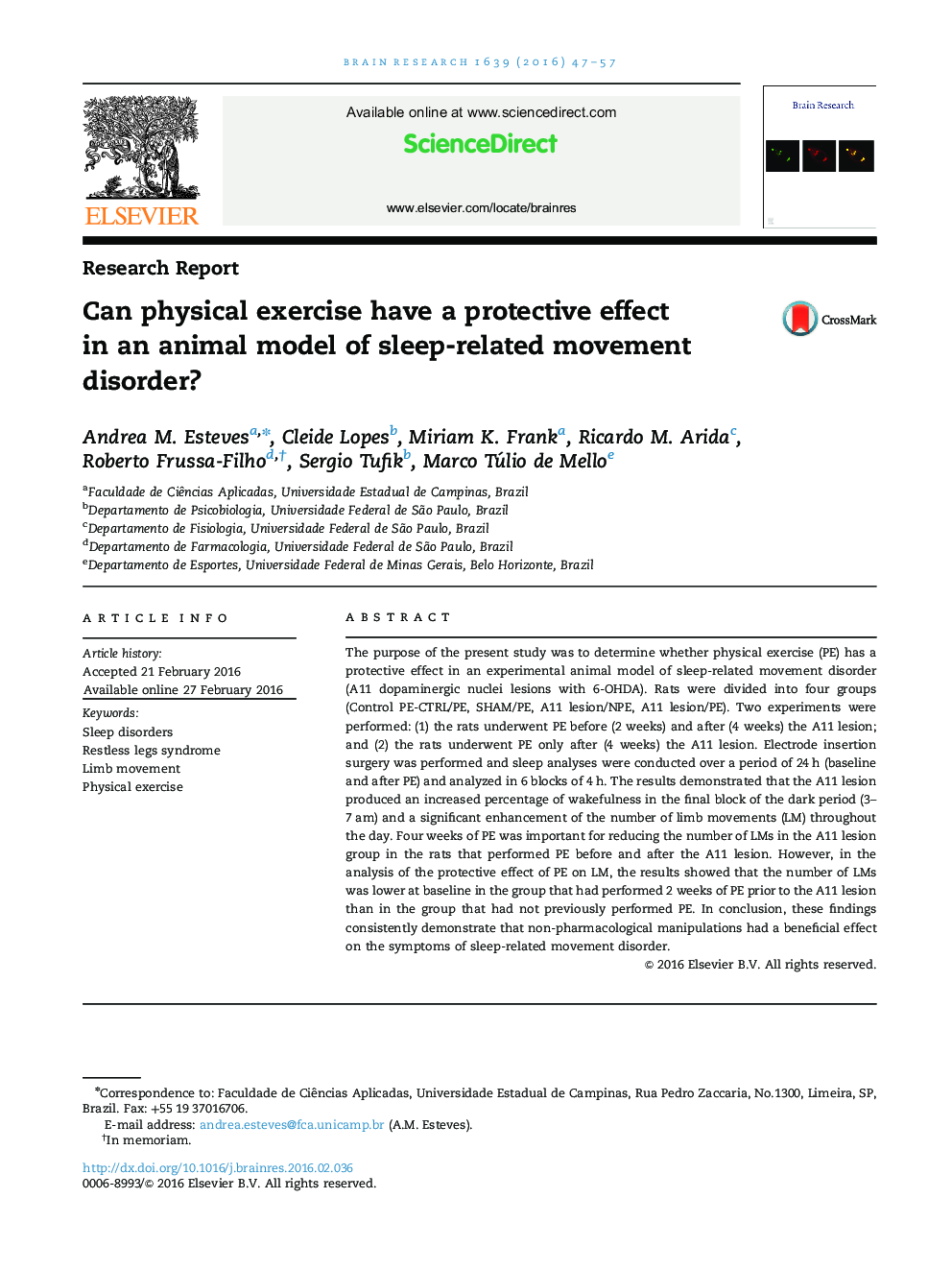| Article ID | Journal | Published Year | Pages | File Type |
|---|---|---|---|---|
| 6262573 | Brain Research | 2016 | 11 Pages |
â¢A11 dopaminergic nuclei lesions with 6-OHDA produced an increased percentage of wakefulness.â¢Four weeks of physical exercise were important for reducing the number of limb movements in the A11 lesion.â¢Physical exercise prior to the A11 lesion represented a significant protective factor for LMs.
The purpose of the present study was to determine whether physical exercise (PE) has a protective effect in an experimental animal model of sleep-related movement disorder (A11 dopaminergic nuclei lesions with 6-OHDA). Rats were divided into four groups (Control PE-CTRL/PE, SHAM/PE, A11 lesion/NPE, A11 lesion/PE). Two experiments were performed: (1) the rats underwent PE before (2 weeks) and after (4 weeks) the A11 lesion; and (2) the rats underwent PE only after (4 weeks) the A11 lesion. Electrode insertion surgery was performed and sleep analyses were conducted over a period of 24Â h (baseline and after PE) and analyzed in 6 blocks of 4Â h. The results demonstrated that the A11 lesion produced an increased percentage of wakefulness in the final block of the dark period (3-7Â am) and a significant enhancement of the number of limb movements (LM) throughout the day. Four weeks of PE was important for reducing the number of LMs in the A11 lesion group in the rats that performed PE before and after the A11 lesion. However, in the analysis of the protective effect of PE on LM, the results showed that the number of LMs was lower at baseline in the group that had performed 2 weeks of PE prior to the A11 lesion than in the group that had not previously performed PE. In conclusion, these findings consistently demonstrate that non-pharmacological manipulations had a beneficial effect on the symptoms of sleep-related movement disorder.
